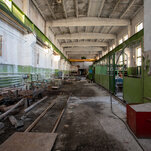Traveling to Shanghai in 2025: A Gateway to Modern China
Shanghai, often called the “Pearl of the Orient,” is a vibrant metropolis where the ancient and the futuristic blend seamlessly. As one of the world’s largest cities and a global financial hub, Shanghai continues to attract millions of visitors each year. In 2025, Shanghai promises even more dynamic experiences, enhanced infrastructure, and cultural richness for travelers.
Why Visit Shanghai in 2025?
Shanghai’s appeal lies in its unique juxtaposition of history and ultramodernity. The city embodies China’s rapid development while preserving its rich heritage, offering visitors a deep dive into Chinese culture, architecture, and cuisine. By 2025, Shanghai is expected to showcase further urban innovation and improved travel facilities, making it an ideal destination for tourists, business travelers, and culture enthusiasts alike.
Getting There and Around
International Access
Shanghai is served by two major airports: Pudong International Airport (PVG) and Hongqiao International Airport (SHA). Pudong handles most international flights and long-haul routes, while Hongqiao caters mainly to domestic and regional flights.
In 2025, Pudong Airport will continue expanding its terminals and services, streamlining immigration, and improving passenger experience. The introduction of more direct flights from North America, Europe, and Asia will make traveling to Shanghai more convenient.
Urban Transportation
Shanghai boasts an extensive and efficient public transportation network. The Shanghai Metro, one of the world’s largest, will have expanded to cover over 1,000 kilometers of track by 2025, connecting every corner of the city and suburban areas. The metro is affordable, clean, and punctual, making it the best way to explore.
Additionally, Shanghai’s public bike-sharing programs and electric scooter rentals provide eco-friendly last-mile options. Ride-hailing services and an expanding network of electric vehicles also contribute to sustainable urban mobility.
Top Attractions to Explore in Shanghai
The Bund (Waitan)
A historic waterfront area along the Huangpu River, the Bund features a stunning skyline with a mix of colonial-era buildings and futuristic skyscrapers. Visitors can stroll along the promenade, enjoy panoramic views of the Pudong financial district, and admire landmarks like the Customs House and the Peace Hotel.
Pudong Skyline and Shanghai Tower
Pudong’s Lujiazui area is home to some of the tallest buildings in the world. The Shanghai Tower, standing at 632 meters, is China’s tallest skyscraper and the second tallest worldwide. Visitors can take an elevator to its observation deck for breathtaking views of the city.
Yu Garden and Old City
For a taste of traditional Chinese culture and architecture, the Yu Garden is a must-visit. This classical garden dates back to the Ming Dynasty and features exquisite landscaping, rockeries, pavilions, and koi ponds. Nearby, the Old City offers traditional markets, street food, and shops selling souvenirs and crafts.
Museums and Cultural Centers
Shanghai boasts world-class museums like the Shanghai Museum, which displays ancient Chinese art, and the Power Station of Art, the city’s contemporary art museum. The China Art Museum, housed in the former China Pavilion from Expo 2010, is another highlight.
Nanjing Road
Known as China’s premier shopping street, Nanjing Road is a bustling pedestrian avenue lined with international brands, luxury stores, and local boutiques. In 2025, expect more digital shopping experiences and interactive storefronts as Shanghai embraces smart retail technologies.
Culinary Experiences
Shanghai’s culinary scene is diverse, ranging from street snacks to Michelin-starred restaurants. Traditional Shanghainese cuisine includes dishes like Xiaolongbao (soup dumplings), Shengjianbao (pan-fried buns), and Braised Pork Belly (Hong Shao Rou). Food markets like Tongchuan Road and Wujiang Road offer authentic flavors and vibrant atmospheres.
Shanghai is also home to an international dining scene with global cuisines and fusion restaurants reflecting its cosmopolitan nature. Foodies visiting in 2025 will find an even greater variety of dining options, including plant-based and health-conscious eateries.
Events and Festivals in 2025
Shanghai hosts numerous festivals throughout the year, celebrating art, film, culture, and technology. Some notable events in 2025 will include:
- Shanghai International Film Festival: Asia’s largest film festival, showcasing international cinema.
- Shanghai Fashion Week: Highlighting the latest trends from Chinese and global designers.
- Dragon Boat Festival: Traditional boat races and cultural performances along the Huangpu River.
- Shanghai International Art Festival: Exhibitions, performances, and workshops across the city.
Practical Tips for Travelers in 2025
- Visa Requirements: Many countries benefit from visa-free or simplified visa processes to China. However, always check the latest requirements before travel.
- Language: Mandarin is the official language, but English is widely spoken in tourist areas and business districts.
- Currency: The Chinese Yuan (CNY) is the official currency. Mobile payment methods such as Alipay and WeChat Pay are common and increasingly accepted by international travelers.
- Climate: Shanghai has a humid subtropical climate. Spring (March to May) and autumn (September to November) are the best times to visit due to mild weather.
- Health and Safety: Shanghai is generally safe for travelers. Ensure travel insurance covers medical emergencies. COVID-19 protocols have been relaxed but check current regulations.
- Connectivity: High-speed internet and public Wi-Fi are widely available. A local SIM card or portable Wi-Fi device is recommended for ease of communication.
Sustainable Travel Initiatives
Shanghai is focusing on green tourism with efforts to reduce carbon footprints and promote eco-friendly practices. Hotels increasingly implement energy-saving measures and waste reduction. Public transport’s electrification and urban green spaces contribute to a cleaner environment.
Travelers can support these efforts by choosing eco-certified accommodations, using public transit, and participating in community tourism programs.
Accommodation Options
Shanghai offers a wide range of accommodations from luxury international hotels like the Waldorf Astoria and the Ritz-Carlton to boutique hotels and budget hostels. Many new hotels opening by 2025 will feature smart room technologies, green building certifications, and enhanced guest experiences.
The Future of Travel in Shanghai
Shanghai continues to develop as a smart city, integrating AI, IoT, and big data to improve urban life and travel experiences. Innovations such as AI-guided tours, augmented reality apps for sightseeing, and autonomous public transport are expected to become commonplace by 2025.
These advancements aim to provide visitors with personalized, efficient, and immersive experiences, reinforcing Shanghai’s status as a leading global destination.
Summary Table: Shanghai Travel Essentials 2025
| Category | Information |
|---|---|
| Major Airports | Pudong International (PVG), Hongqiao (SHA) |
| Best Time to Visit | Spring (March-May), Autumn (September-November) |
| Language | Mandarin (English common in tourist areas) |
| Currency | Chinese Yuan (CNY), mobile payments widely used |
| Transportation | Extensive Metro system, bike-sharing, ride-hailing |
| Top Attractions | The Bund, Shanghai Tower, Yu Garden, Nanjing Road |
| Popular Food | Xiaolongbao, Shengjianbao, Braised Pork Belly |
| Key Events | Shanghai Film Festival, Dragon Boat Festival |
| Accommodation Range | Luxury hotels, boutique hotels, budget hostels |
| Safety Level | High |
Conclusion
Shanghai in 2025 represents a perfect blend of tradition and innovation, offering travelers unparalleled experiences across culture, cuisine, shopping, and technology. Whether you are visiting for business, leisure, or cultural exploration, Shanghai’s dynamic environment and warm hospitality ensure a memorable trip. With enhanced infrastructure, green initiatives, and smart city developments, Shanghai is poised to be one of the top travel destinations in the world in 2025 and beyond.












